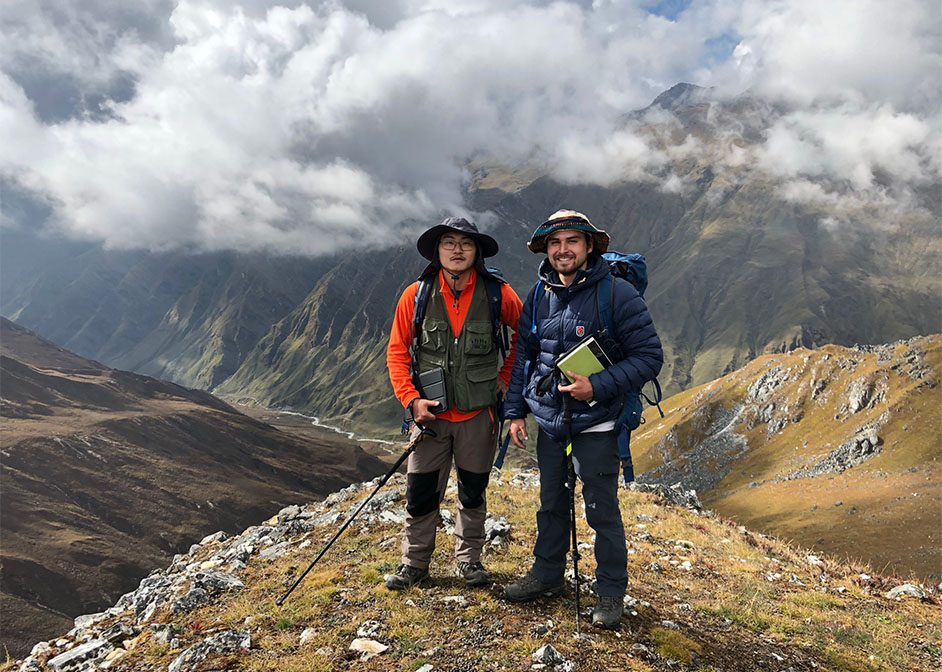Students and Faculty Assess Hazards of Active Faults in The Himalayas
A group of UH students and faculty (Dr. Mike Murphy, Dr. Suoya Fan, Michael Daniel, and Brennen Kuhn) have been part of an international collaborative effort to conduct a seismic hazard analysis in western Nepal.

The group consists of professors and graduate students from UH, University of Kansas, Virginia Tech, and Tribhuvan University.
Researchers conducted three trips to western Nepal between spring 2019 and spring 2022. Students mapped active oblique fault segments that compose the Western Nepal Fault System (WNFS) to understand the neotectonics and paleoseismology. The WNFS cuts through the Himalayan Mountains from the high elevation regions near Tibet to the lowlands near India.
The ultimate goal of this project is to assess the location and movement of the active faults in the western Nepal region. This information will be used to create hazard maps for nearby villages and cities.
The collected data will be compiled and sent to Dr. Richard Styron at Global Earthquake Modelling who will perform the seismic hazard analysis.
In addition, a collaboration with Dr. Elaina Sutley, an associate professor of civil, environmental, and architectural engineering at the University of Kansas, will create more sustainable building designs for the schools and homes at high risk to earthquake damage due to their proximity to these active faults.
